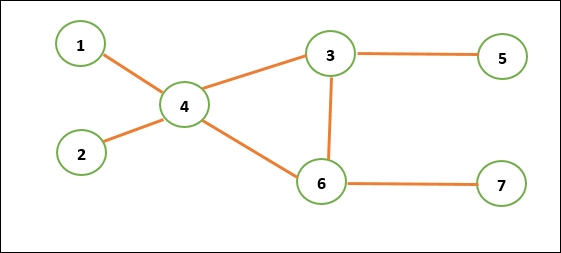What is a graph?
A graph is a mathematical representation of linked data. It is a study of relationships or relationships objects, and it is formed by vertices (also known as nodes or points), which are connected by edges (also known as arcs or lines). A graph may be directed or undirected, where a directed graph implies that edges have direction associated with them, while an undirected graph implies that the edges do not have a direction associated with them.
A graph is therefore represented as an ordered pair of G=(V,E) where V is a set of vertices, nodes, or points connected by E, which is a set of edges, arcs, or lines. For example, in Figure 7.1, we have a set of vertices numbered 1 to 7, and certain vertices are connected by more than one edges, for example, 4 connected to vertices 1,2,3,6 while 7 is only connected to 6.

Figure 7.1: An example of a Graph
In computer science, graphs are used to represent networks of communication such as data organization, a set of computational...



























































